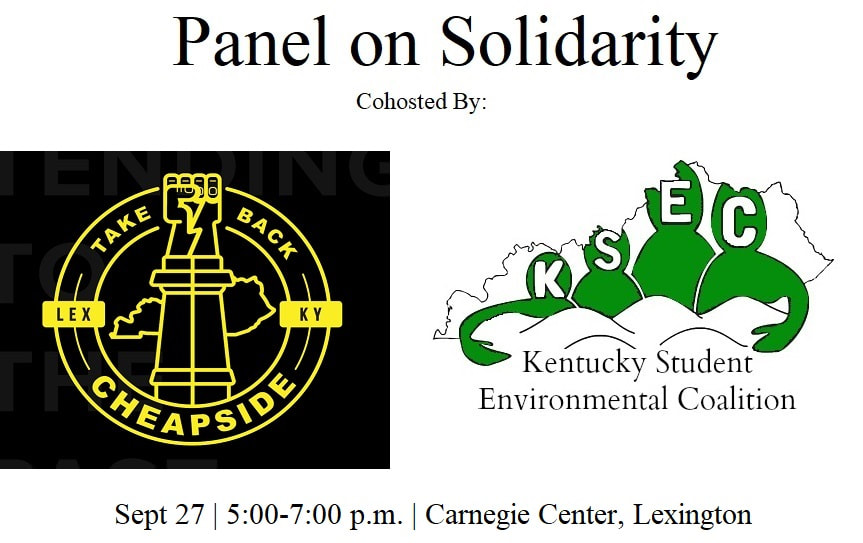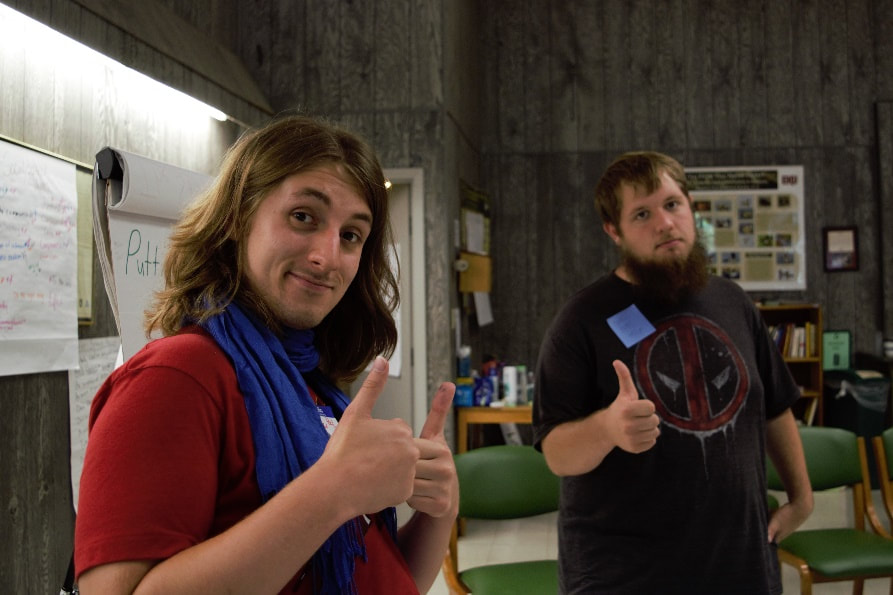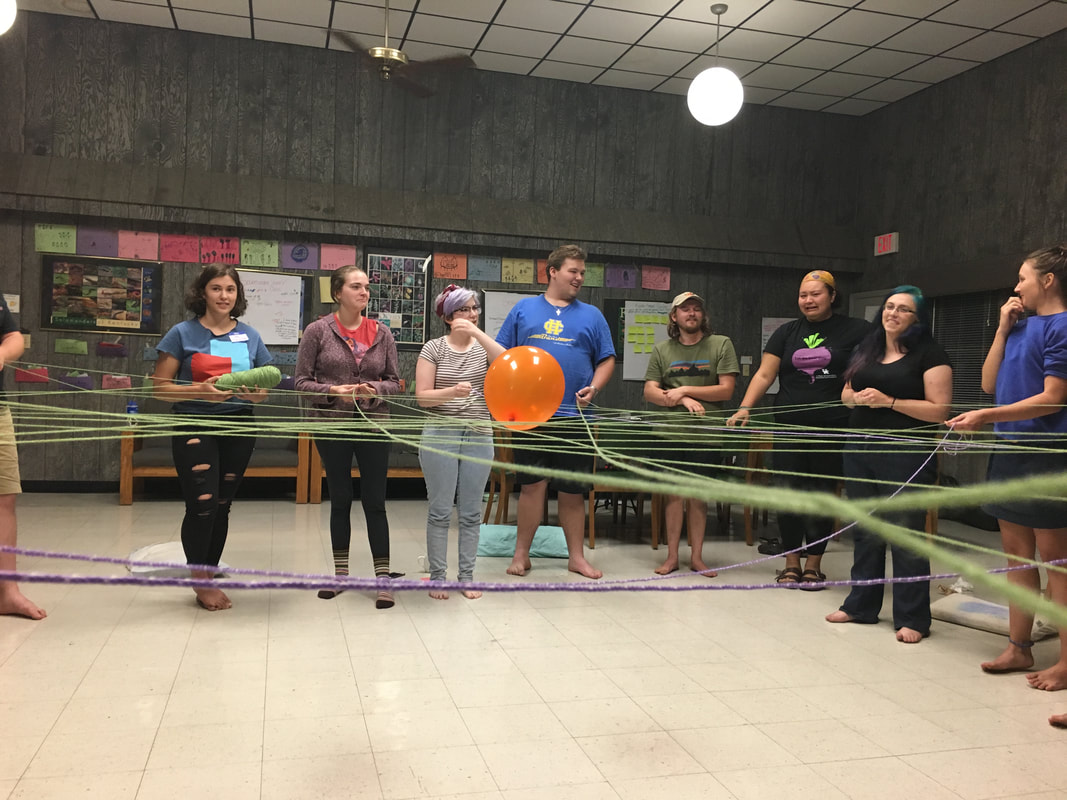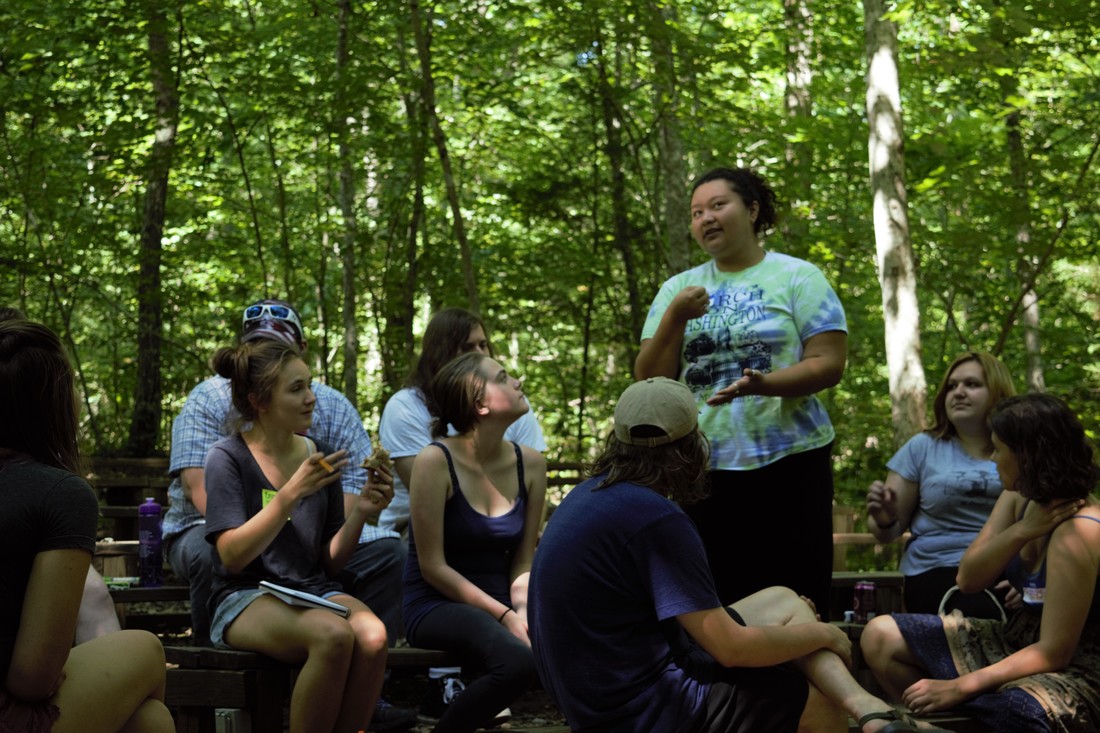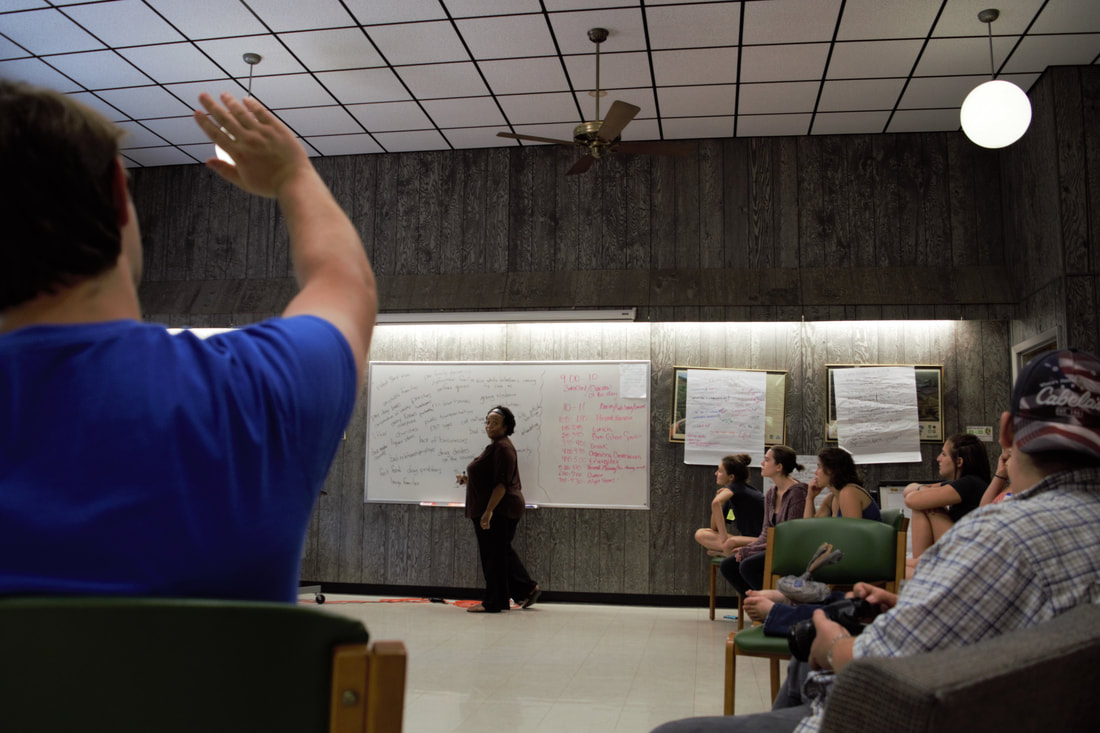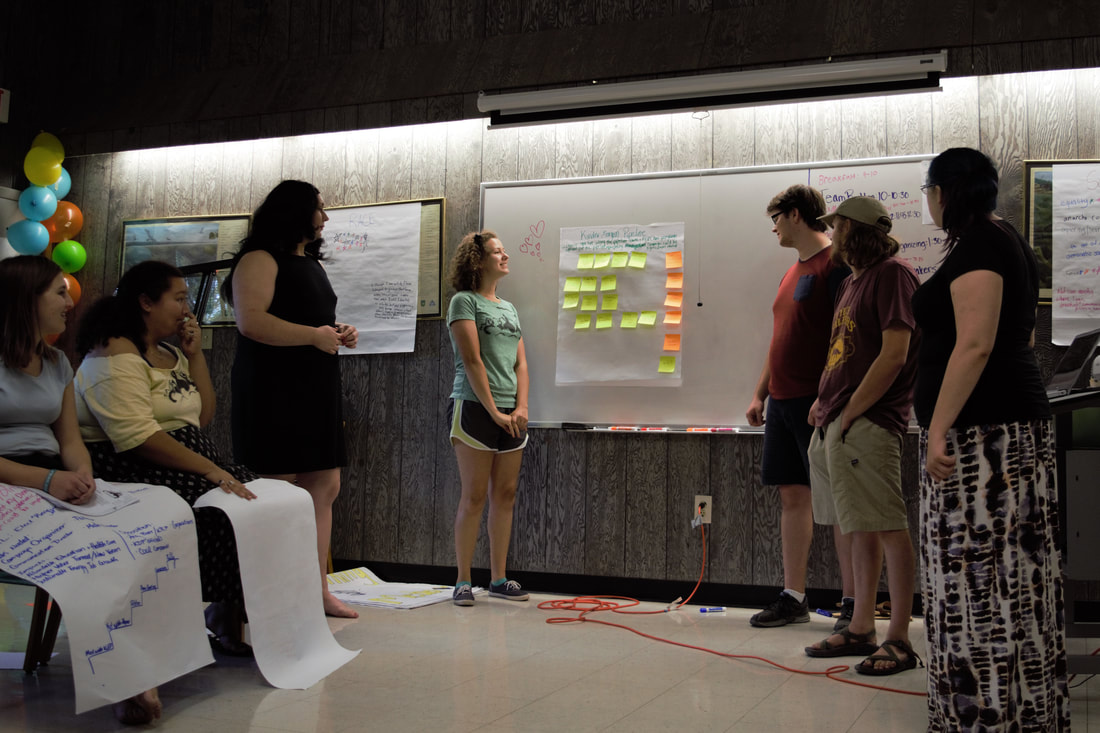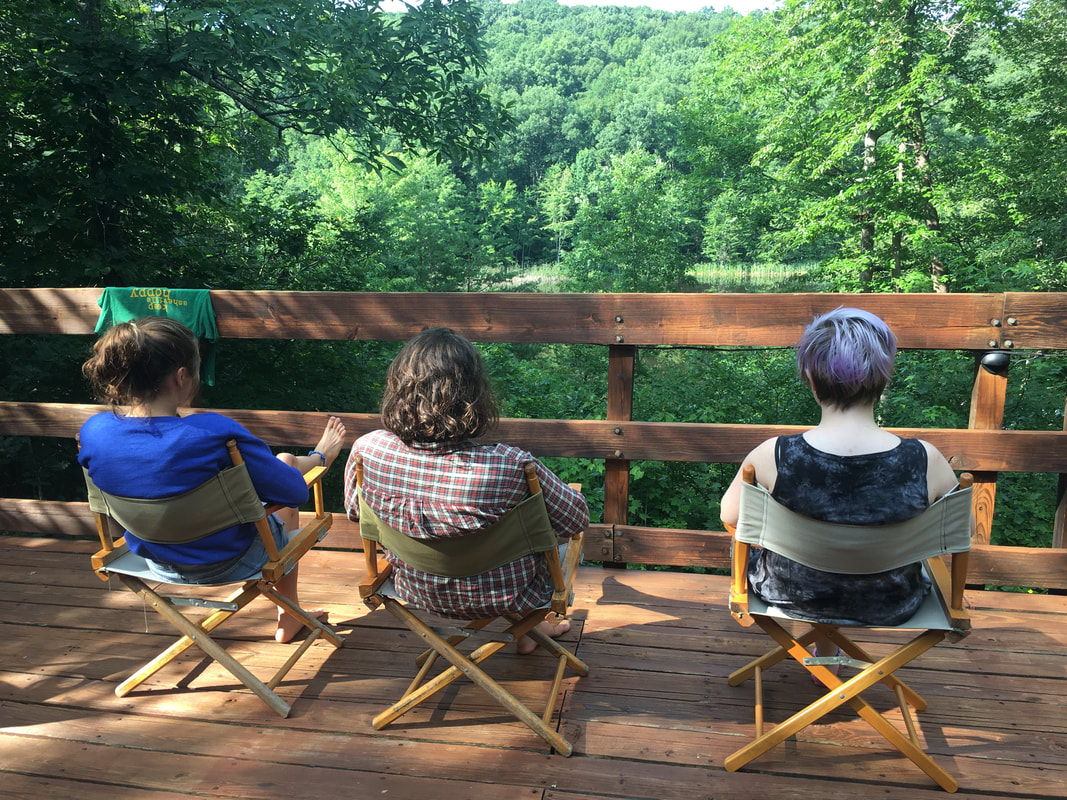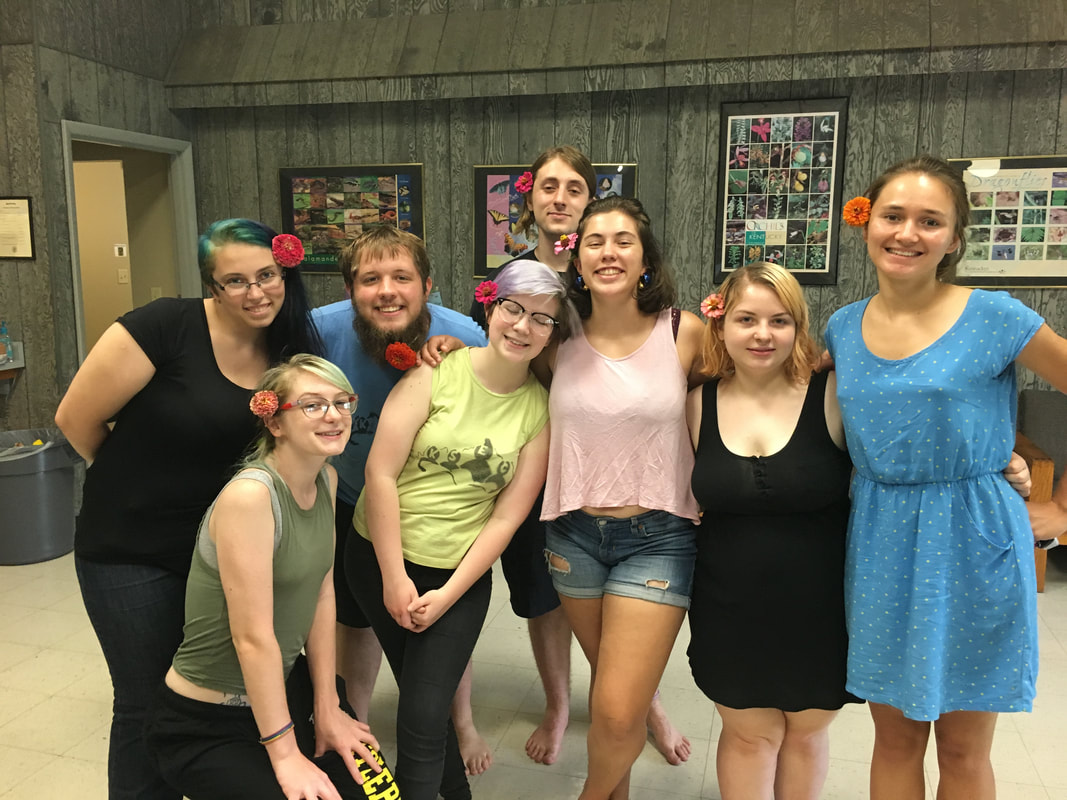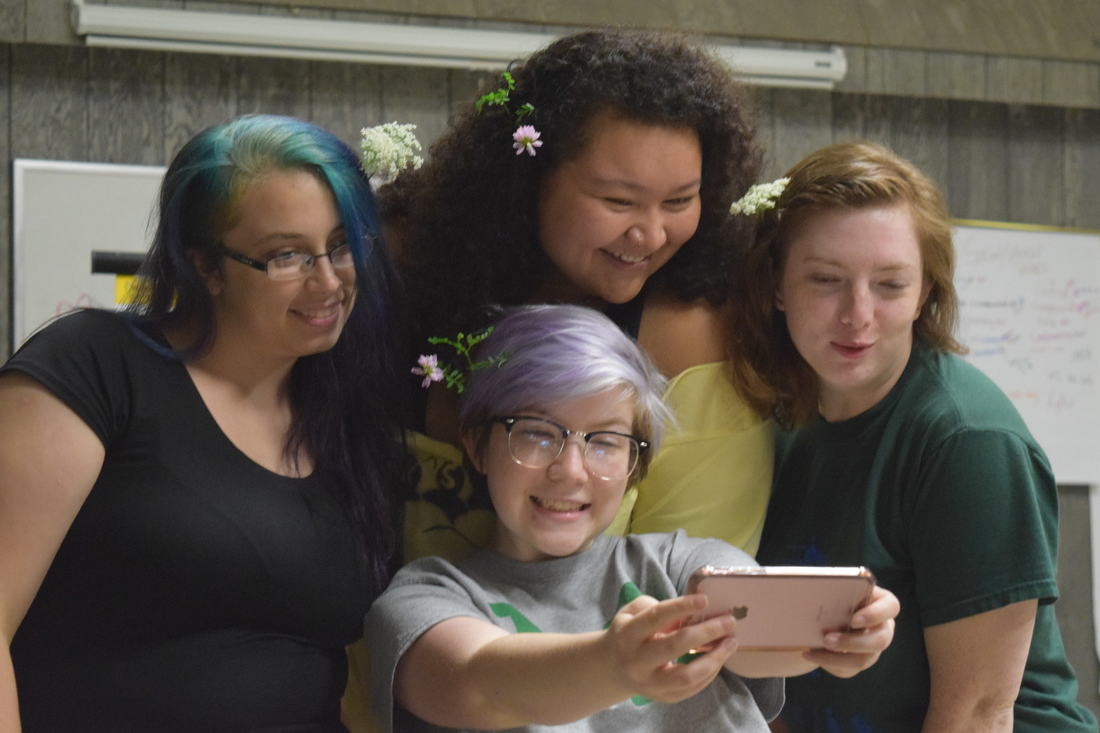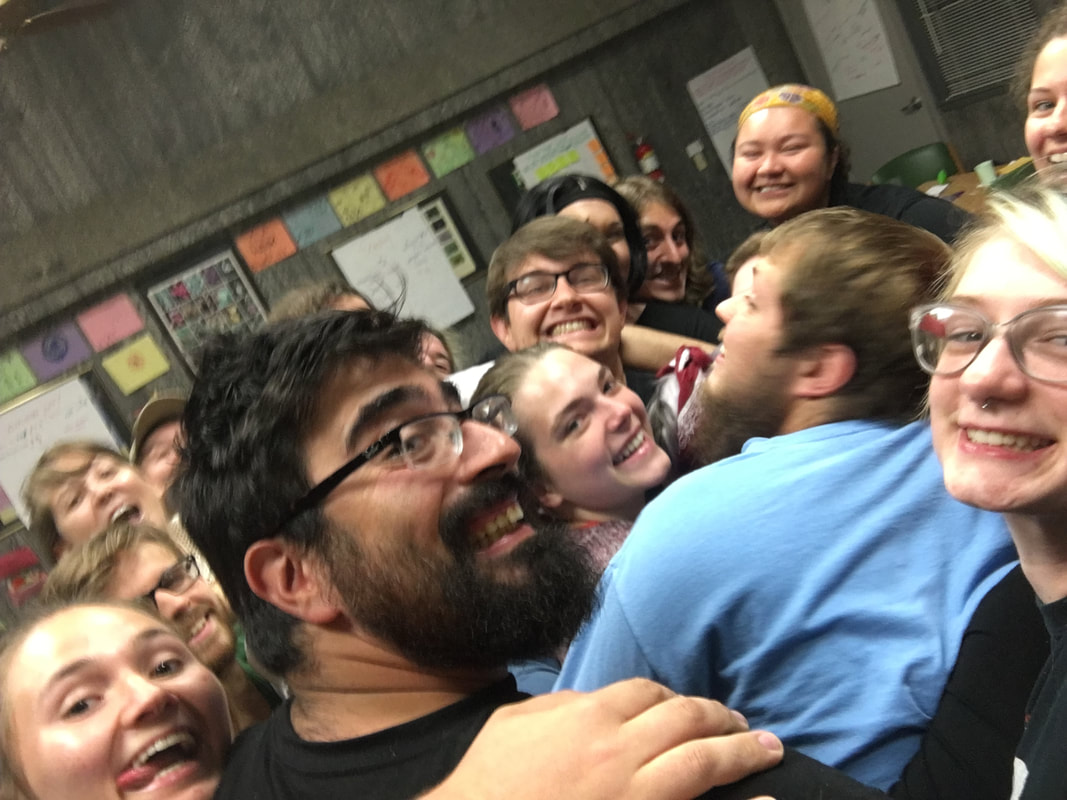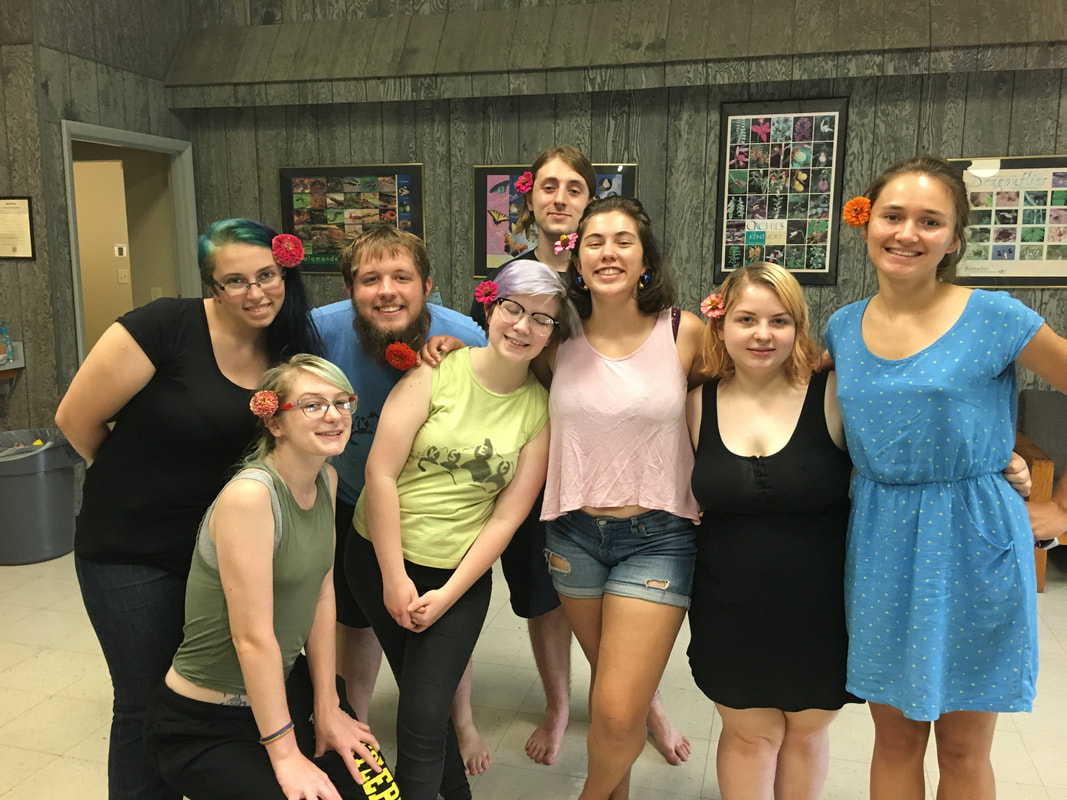|
By Cameron Baller: UK Greenthumb, Just Transition Working Group Steering Committee, Pipelines and Natural Gas Working Group The 2016 presidential election threw every federal agency for a spin, few more so than the Federal Energy Regulatory Commission (FERC). A little known agency, the FERC is responsible for regulating nuclear energy and oil and gas pipeline infrastructure, among other things. After Donald Trump was elected, members of the FERC leadership quit abruptly, leaving the agency without enough administrators to make decisions. They had been stuck in limbo, stalling all new regulations and decisions about pipelines. This purgatory is where the Kinder Morgan Pipeline project has been for the past few months… but no longer. This dangerous pipeline project is lurking under our radar and it is critical that we prepare now so that we can stop it in its tracks. Read on for more information and to learn how to join us in stopping this pipeline. 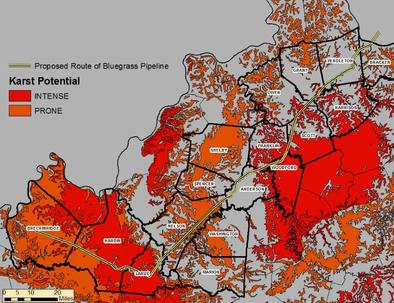 Not Kentucky’s First Rodeo There is a storied legacy of companies trying to snake dangerous pipeline infrastructure through Kentucky. In 2013, the Williams and Boardwalk Pipeline Partners proposed the Bluegrass Pipeline. In an effort to intimidate landowners into selling their land for the construction of the pipeline, the company told landowners that it would use eminent domain to take their land for the project, which would be a bad financial deal for the landowners. A broad array of constituents came together, including landowners, advocacy groups, policymakers, and even a group of singing nuns to fight the project. Several landowners formed a blockade, refusing to sell their land to the pipeline company, while other allies pursued legal action. In 2015, the Kentucky court system determined that the Bluegrass Pipeline could not use eminent domain to seize land for the project, functionally stopping the pipeline. The court ruling hinged on a key fact: the pipeline was carrying natural gas liquids (NGLs) and NOT natural gas. NGLs are not methane and are not used primarily for energy. They are co-products that are obtained, along with methane, from the natural gas extraction process. Rather than being used for heat and power, they are used as inputs for plastics and chemical manufacturing. This distinction was critical in the court’s eminent domain decision. Another important distinction between NGLs and natural gas is that NGLs vaporize and, because of their relative weight, displace the air. In simple terms, this means that when an NGL pipeline leaks, the vapors could suffocate anyone and everyone within the leak area. 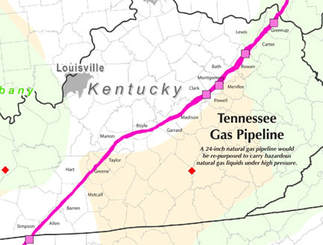 Credit: Kentuckians For The Commonwealth Credit: Kentuckians For The Commonwealth A New Pipeline Waiting to Strike Not long after the Bluegrass Pipeline was defeated, Kinder Morgan began exploring their own NGL pipeline project. This time, the dangers are even more severe. The Tennessee Gas Pipeline is owned by a subsidiary of Kinder Morgan and has carried actual natural gas from South to North for over 70 years. Now, Kinder Morgan hopes to “abandon” this pipeline (to do so, it must first get the approval from the FERC) and then sell the pipeline to another one of its subsidiaries, the Utica-Marcellus Texas Pipeline (UMTP). UMTP would re-purpose the pipeline, flip the flow so that it goes from North to South, and send NGLs along the pipeline instead of natural gas. There are a few important reasons this project is even more dangerous than the Bluegrass Pipeline. The existing pipeline is more than 70 years old, therefore subject to the normal wear and tear that 70 years of use will bring, and no longer meets today’s pipeline construction safety standards. In an area with geology as dangerous as Kentucky’s infamous karst, where sinkholes gobble up several Corvettes at a time, it is terrifying to think that we are considering transporting dangerous NGLs by pipeline, let alone transporting them through a pipeline so old and out of standard. Furthermore, they are both flipping the flow of the pipeline and sending new materials down it, these are both stressors that the pipeline has not been subjected to and could present unpredictable problems and an increased risk of leaks. Finally, Kinder Morgan observed and learned from the Bluegrass Pipeline fight. In re-purposing an existing pipeline, they may be able to utilize the existing land easements, circumventing the need for eminent domain. These tactics go against the clear demands of Kentuckians and require new and creative strategies in response. Re-organizing in the New Landscape
In August, the FERC regained quorum after Trump appointed new commissioners to the agency. Given the political leanings of these appointees, we should not be surprised when they approve Kinder Morgan’s request to “abandon-in-place,” functionally granting the company a blank check to do the re-purposing. As the official comment period is over, and the die seem to be cast in terms of the FERC, it seems like the most important action now would be to prepare for that announcement and get out ahead of it. The good news is we are not beginning from scratch. Organizations across Kentucky have been working on this issue since the beginning, including the Kentucky Resources Council (KRC), Kentucky Heartwood, Kentuckians for the Commonwealth (KFTC), the Kentucky Environmental Foundation, among others. However, organizing efforts have stalled as the FERC lost its ability to make decisions. It is essential that we now re-energize resistance efforts before it is too late. With that goal in mind, the Kentucky Student Environmental Coalition (KSEC) has created a new Pipelines and Natural Gas Working Group (PNWG), which is focused on stopping the Kinder Morgan Pipeline project. We plan to work with other state and campus organizations, local communities and government officials to create a multi-layered resistance effort sufficient to block the project. We cannot hope to tackle this issue alone. Following the lead of the Bluegrass Pipeline resistance movement, we hope be a part of creating a diverse resistance movement across the state that can demonstrate a unified voice against the pipeline. We are more powerful than Kinder Morgan, but only together. In the coming weeks and months, we will be reaching out to a variety of stakeholders and developing tactics that allow everyone to be a part of this resistance. For now, informing yourself on this issue and preparing to become a part of the response effort are critical. We will fight for our future and we will no longer be ignored.
0 Comments
By DeBraun Thomas, Take Back Cheapside I have long been a student of history. I’ve always been fascinated by the way others have overcome obstacles I’ve never had to face. Learning how things came to be and what can come from experiences of the past has inspired me to continue researching and exploring history. Sometimes, the past can seem much farther away than it actually is and in a way, we can become desensitized to atrocities of the past. When it comes to the continued fight against oppression, our understanding of the present should be placed within the context of historical perspective. I was born on March 3rd 1989. George HW Bush was President of the United States and the country was entering yet another phase in history. I was born 126 years after the Emancipation Proclamation, 35 years after the murder of Emmett Till and the decision of Brown v. Board of Education, 24 years after the passing of the Voting Rights Act of 1965, 21 years after the assassination of Dr. Martin Luther King Jr., 20 years after the assassination of Fred Hampton and 20 years after Apollo 11. Yes, you read that correctly, I was born only 20 years after the moon landing. I am the great grandson of a slave and I’m only 28 years old.
I moved from Menlo Park, California to Lexington in 2008 to attend the University of Kentucky. As I met more people from the city and my social circles bubbled outside of the university, I started learning about Lexington’s history. While much of Lexington’s landscape has changed, many things considered “tradition” have stayed the same. One of the many places in Lexington that has not changed very much is the space downtown known as Cheapside. Since the inception of the city in 1782, the space has been used as a marketplace. To clear up any misconceptions, the name Cheapside comes from Old English. Ceap in Old English means “to buy” and side means “place,” therefore the name literally means marketplace. Between 1830 and 1865, Cheapside was home to the second largest slave auction site in the country. In 1887, 22 years after the Civil War ended, a statue was erected of John C. Breckinridge, Secretary of War for the Confederacy. In 1911, 46 years after the Civil War ended, there was a statue erected of John Hunt Morgan, a Confederate General. Both of these men defected to the Confederacy and both of them were slave owners who fought to uphold the institution of slavery. Their statues stood at Cheapside with no telling of history of the space as a slave market until 2003, when Kappa Alpha Psi Fraternity placed a historical marker to memorialize the marketplace’s past. After George Zimmerman was found not guilty in the murder trial of Trayvon Martin in 2013, a conversation about racial justice began sweeping across the nation. In 2015, this conversation descended to Lexington, causing many to look within their own community. Part of this conversation was around the statues still standing at Cheapside. That year, someone spray painted “Black Lives Matter” on the statue of John Hunt Morgan and the historical marker was knocked down and broken. This prompted Mayor Gray to request to the Urban County Arts Review Board (UCARB), a group of appointed individuals who discuss the placement and/or removal of art in public spaces, to give a recommendation on what to do with Cheapside. I attended two public discussions on the issue. The first was a town hall meeting at the Carnegie Center. In the room were members of the Klan and supporters of the Confederacy. The tension was high, but in that moment, I felt that the voices of the oppressed were actually being heard. The second meeting was held at City Hall in front the UCARB. I was the youngest person in the room except for the two little girls of a man who was adamant about keeping the statues for fear of the “erasure of history.” In July of 2016, Philando Castile and Alton Sterling were both killed by police officers. Both murders were captured on video and in both cases each of these men were doing nothing to warrant losing their lives. I was angry and frustrated that, in 2016, these issues were still happening and that I found myself continuing to have to explain and justify the phrase “black lives matter” to individuals lacking in melanin. In death, Castile and Sterling inspired me to channel my anger and frustration into constructive action; the result was Take Back Cheapside, a movement to remove the two confederate statues from Cheapside Park and commemorate Lexington’s black history. I believe that we as people can have the most success fighting oppression by understanding each other’s individual struggles and by standing together. These values are at the heart of Take Back Cheapside. This blog post was originally scheduled to go online on Monday, August 14th. All of those plans changed after the events in Charlottesville on August 12th. It is a day I will never forget and a day that changed my life. Many different people across the country came out to make statements about what had happened. I was struck with so much grief and I will never forget the name Heather Hyer the same way I will never forget Emmett Till. I was still trying to process all that happened when I got a phone call from someone in City Government who told me they had heard that the mayor of Lexington, Jim Gray, was going to announce plans to move the Confederate statues at Cheapside at the city council meeting that Tuesday. It was a bittersweet moment because it came on the heels of Charlottesville, but I found solace in the fact that we could move forward with this work in a way that had the support of city officials. Once the mayor’s plan was made public, I immediately started planning for what was to come, well, and then I went and got a burrito (because eating is important). Later that evening Mayor Gray released a video statement on Facebook. All of the conversation up to this point had highlighted the statues and not the space itself. That’s why, after watching the video statement, I was relieved and confident that the mayor was moving forward with his efforts to relocate the statues for the right reason. Towards the end of the video, Mayor Gray said “the statues that stand on our old courthouse lawn today also stand on sacred ground, the Cheapside auction block” he then goes on to say “So let’s think about it, it’s just not right we would continue to honor these Confederate men who fought to preserve slavery on the same ground as men, women, and even children were once sold into a life of slavery. Relocating these statues and explaining them is the right thing to do.” So, what do these recent events mean for the campaign? Well, we are very close to where we want to be, but still have a long way to go. The conversation about moving confederate monuments was thrust even more into the spotlight and in the same way people used their voices to try to silence us, many others in this city used theirs to join us. On August 17th, after hearing from members of the community for 3 hours, the city council voted unanimously to give the city 30 days to find a new location for the statues. Once they find a new location and confirm it, then the city can send their petition to the Kentucky Military & Heritage Commission. That commission meets in November and if they vote in our favor, the statues will be relocated. My life has been extremely stressful since August 13th. I have received threats to my life, have needed to stay at other people’s homes, and everywhere I go, I am looking over my shoulder. While it puts a strain on every aspect of my life, it is a burden I’m willing to bear because others, like the 19th century abolitionists and 20th century civil rights leaders, did the same for me. So, that being said, I’d like for you to read the last few paragraphs of what I originally had written for this blog post (before Charlottesville) because the solidarity I wanted for this city was exemplified at the city council work session on August 15th and at the city council meeting on August 17th and has continued to be exhibited by all of the other organizing groups that have come to aide Take Back Cheapside. The room was overflowing with people, so much so that on Thursday, people were lined up outside the government building and were also watching the meeting at other businesses downtown. The police Chief the other day told me that it was the most people he’s seen at a city council meeting in his 30 years on the force. That is not just what democracy looks like, but what solidarity is. Fred Hampton, a leader of the Illinois Chapter of the Black Panther Party, embodied solidarity and once said, “you don’t fight fire with fire, you fight fire with water. We’re gonna fight racism not with racism, but we’re gonna fight racism with solidarity.” Merriam Webster’s dictionary defines solidarity as “unity (as of a group or class) that produces or is based on community interests, objectives and standards.” Many of the people who pushed the Civil Rights Movement forward were young people, college students, friends and peers who stood together for something greater than themselves. In the annals of history, they are viewed as larger than life, but in reality, they were just everyday people. Fred Hampton was an ordinary college student who brought a much-needed spark the to the movement for his generation and now is the time we provide the spark for ours. I am writing about the oppression of people of color on an environmental blog for the very definition of solidarity. The movements for racial justice and environmental protection are deeply connected. Every movement that struggles for justice, from the labor movement to the feminist movement and everything in between, is connected in their resistance of the same oppressive systems and power structures. Only when these movements stand together in solidarity will any of them truly win. I think that a quote from 1971 by Funkadelic speaks to this very ideal: “Freedom is being free of the need to be free.” Take Back Cheapside is co-hosting a Panel On Solidarity with the Kentucky Student Environmental Coalition to further explore how our respective movements for racial justice and environmental protection are connected and can stand together. I hope you’ll join us at the Carnegie Center on September 27 from 5:00 to 7:00 p.m. to learn more about Take Back Cheapside and Lexington’s forgotten history of people of color, the work KSEC is doing to build a just and environmentally sustainable Kentucky, the systems of oppression that connect our movements, and why it’s important that our two organizations support one another. We hope to inspire others to work together in solidarity. Step up and be the change you wish to see in the world so that one day others can have a chance to be successful because you fought for them. We can work towards that day by standing together and by fighting every single day to give All Power To The People. By Jae Sledge, Catalyst Trainer Two of our trainers are getting ready to facilitate great conversations around how to use the skills they learned throughout the week. The group does an activity where we share one continuous string together and in the end, it holds up a balloon. This is to represent community, and many communities coming together to accomplish a common goal; Something we felt like we did that week. Participants like Sophia lead conversations and learn from each other. Not only that but they learn about each other, creating understanding friendships. Allison, one of the participants, worries about the safety of the baby toads. While others are on their way to the theater, she works on making sure people don’t step on them. Eboni Cochran came to speak about environmental racism. It affects her community in Louisville, called Rubbertown. This stresses the importance of intersectionality and inclusivity within the environmental movement. Participants put their skills to use in making an actionable plan for a campaign. They blew it out of the water with the limited time they were given! During downtimes, we tried to enjoy the environment and/or the company of those around us. Emma, Grace, and Libby look out over the pond. Flowers are cute and so are we! Friends taking selfies with some more flowers sprinkled in it. A big ol’ cinnamon roll hug at the end of the week with everyone who wanted to join in.
Just what the heart needed. By Tyler Hill, Catalyst Trainer 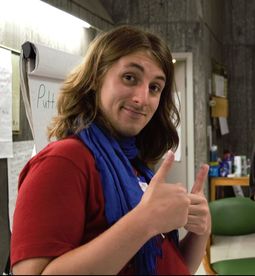 Tyler about to facilitate a training at Catalyst 2017. Tyler about to facilitate a training at Catalyst 2017. I’m the type of person who uses every available minute to think through a decision. I consider the benefits and scrutinize the downsides of every facet of a choice, giving every consideration its due twice over before finally settling on an option. While this process usually leaves me satisfied, often I find myself scurrying at 11:53 PM to fill out an application due at midnight. That’s how I spent the last minutes before 2017 arrived, applying to be a Catalyst trainer. I stressed over the decision to join the Catalyst training team from the moment I finished being a participant at the 2016 camp. That week in July had been one of the best in my life. I’d learned so much useful information which I immediately applied to my student organizations at university. More importantly to me, though, I connected with smart, kind, like-minded people who opened my eyes to new ideas and made me feel comfortable doing so. I’d left Catalyst ready to make a difference. Returning to the program as a trainer, however, seemed daunting in light of my circumstances. Spring semester 2017 was my last as an undergraduate at University of Kentucky, and I had two senior writing courses to complete on top of my day job. I didn’t think I would have enough time in the day to prepare trainings or raise money. In the end, I decided I could juggle those responsibilities. That’s how I came to hit “enter” on that application only a minute from midnight. Now that this year’s Catalyst has come and gone, I would like to help people like me who may be stressing over the decision to join next year’s team. A full accounting of the Catalyst process ought to give you an idea of what to expect. While my experience is mine alone, I think that those of you tempted to apply might find something of value in it. I would say to you potential future trainers that the process of creating Catalyst was fulfilling from the first team call in January to the last hug goodbye in July. Phone calls, as it happens, are a key part of the process. Communication among the directors and trainers is key to turning the Catalyst dream into a reality. My teammates and I spoke over the phone many, many times. There were the weekly team calls in which we talked big strategy -- how to raise funds, who to raise funds from, who to recruit, where to ask for donations of food, and so on. There were one-on-one calls between directors and trainers discussing individual tasks and roles we had adopted. There were the calls between trainers about the ways our roles interacted. Then there were the calls to edit curriculum and develop presentations for the trainings. There were even calls just to vent about how much work needed to be done. We as a team spoke to each other as much as we spoke to anybody else in our lives, even if we were spread all over Kentucky, America, and the world. (Yes, the world -- one of my teammates spent much of the process in another country and did a bang up job!) Naturally, I became well-acquainted with the team over those seven months. All of us were Catalyst alumni and had known each other prior to this job, but we nonetheless grew closer for it. I remember fondly an early call when we played “two truths and a lie.” We goofed around much longer than we should have, but I was smiling the whole time. It’s easy to laugh with my team -- they’re good, thoughtful people who I care for and who care for me in return. We faced challenges to the program and in our personal lives together, never hesitating to help each other when the demands of the job or life outside it proved too much to handle alone. That kind of camaraderie comes in part from working on something special. Building that connection with my team was vital for the work I had to do. I had never raised funds or recruited people for an event like this. As a shy person, asking people to give money or to come to a summer camp weren’t exactly skills I had developed. My teammates, however, had my back. We learned together and helped each other hone our efforts. I was able, for example, to go before my university’s student sustainability council and successfully request that they provide scholarships in the amount of $450 each for UK students to attend Catalyst. All of my team’s help paid off by giving me the confidence to do this and other vital tasks. When Catalyst finally came, I felt prepared. I had mostly finished my presentations, and I knew what needed to be done for those that were unfinished. I had received training to fulfill my roles at Catalyst. I knew the space and had information ready to accommodate the needs of the participants. All of the hours I had invested were paying dividends. Those dividends, in the end, were vast. As much as I felt the participants grew while at Catalyst, I myself became a better person. I saw my team rise to the challenge of running a program like Catalyst. I saw us come together for victories; I watched as we steadied each other when we failed. We improvised for unexpected problems, and we seized surprise opportunities. I had so much fun along the way. Even now, sitting at home after Catalyst has passed, I smile at the thought of all of the friends I’ve made thanks to joining this program. To those of you thinking about applying to be a trainer at Catalyst 2018, I will leave you with a few closing thoughts. If you become a trainer, you will sacrifice many hours in the pursuit of a perfect program. You will struggle. You will worry about your friends on the team. You may even stumble from time to time. The cons of this work may daunt you, so take all the time you need to think it through. In light of those considerations, however, I promise you this: as you are hugging your last friend from Catalyst before you go home, you will wish it had never ended. Catalyst is life changing for both participants and trainers and it will give you an entirely new and hopeful perspective of the world. I know that it has given me more than I can ever pay back. I'm All About Manufacturing Jobs, Just Not at the Price of Kentucky's Environment and Public Health6/7/2017 By Cameron Baller, UK Greenthumb I attended the Kentucky Manufacturer's Conference and Trade Show as a member of the Kentucky Student Environmental Coalition. I support bringing manufacturing jobs to Kentucky and I was curious to learn more about the industry. But instead of hearing about ways government and industry officials are working to bring safe, well-paying jobs to one of our nation’s poorest states, I got an earful of jubilation for cutting safeguards and regulations that protect our workers, communities, and environment.
Going into the conference, I was expecting explanations of why the economy should be prioritized over the environment. What I was not expecting was a near total disregard for environmental issues like climate change and water protection. It wasn’t just that the environment was less important, it was entirely unimportant. And if Kentucky’s manufacturing industry finds the environment worthless, it follows that the industry also finds the people in the environment worthless. At one point, Kentucky Energy and Environment Cabinet Secretary Charles Snavely, former Arch Coal executive, listed off all of the environmental policies that President Trump has rolled back, grinning the whole way through as if it was so grand that many more people will now suffer the health impacts of having to drink polluted water and breathe toxic air. The person charged with protecting Kentucky’s land, water, and air applauded the approval of the Dakota Access and Keystone XL pipelines, the removal of critical stream protections, and the scrapping of the Clean Power Plan. Later in the conference, there was a panel on pipelines and a Marathon Petroleum representative basically said that all of the protests of pipelines were not about water contamination, explosions, or land rights, but were some kind of liberal façade to block the fossil fuel industry. He went on to say the dangers of leaks were miniscule. But when I asked him how much could leak from a pipeline before being detected, he said hundreds of barrels. Let me restate that, if there is a leak that is smaller than “hundreds of barrels,” let’s say 100 or 200 barrels, they would not even know that the leak had occurred. Our water would be contaminated and we wouldn’t even know. The fact that a fossil fuel representative can totally dismiss environmental activists in one breath and then state that there could be hundreds of barrels of oil leaking into our groundwater and no one would know about it is absolutely absurd. The tone of the Kentucky Manufacturer’s Conference should remind us of two important responsibilities. First, we must never let politicians like Trump or Bevin get into office, especially because they won’t be alone, they will bring the Pruitts and Snavelys of the world who will only multiply the destruction they bring onto our people and planet. Second, we must hold corporations accountable. Marathon should not be allowed to operate a pipeline if they can’t detect a hundred barrel leak. Corporations in Kentucky and across the country are getting away with murder because they have politicians in their pockets. It is time to vote with our ballots, vote with our wallets and make ourselves heard. |
AboutThe Young Kentuckian is a blog of the Kentucky Student Environmental Coalition where youth share their work and ideas for Kentucky's bright future. Follow The Young Kentuckian on Facebook!
Categories
All
Archives
March 2023
|

